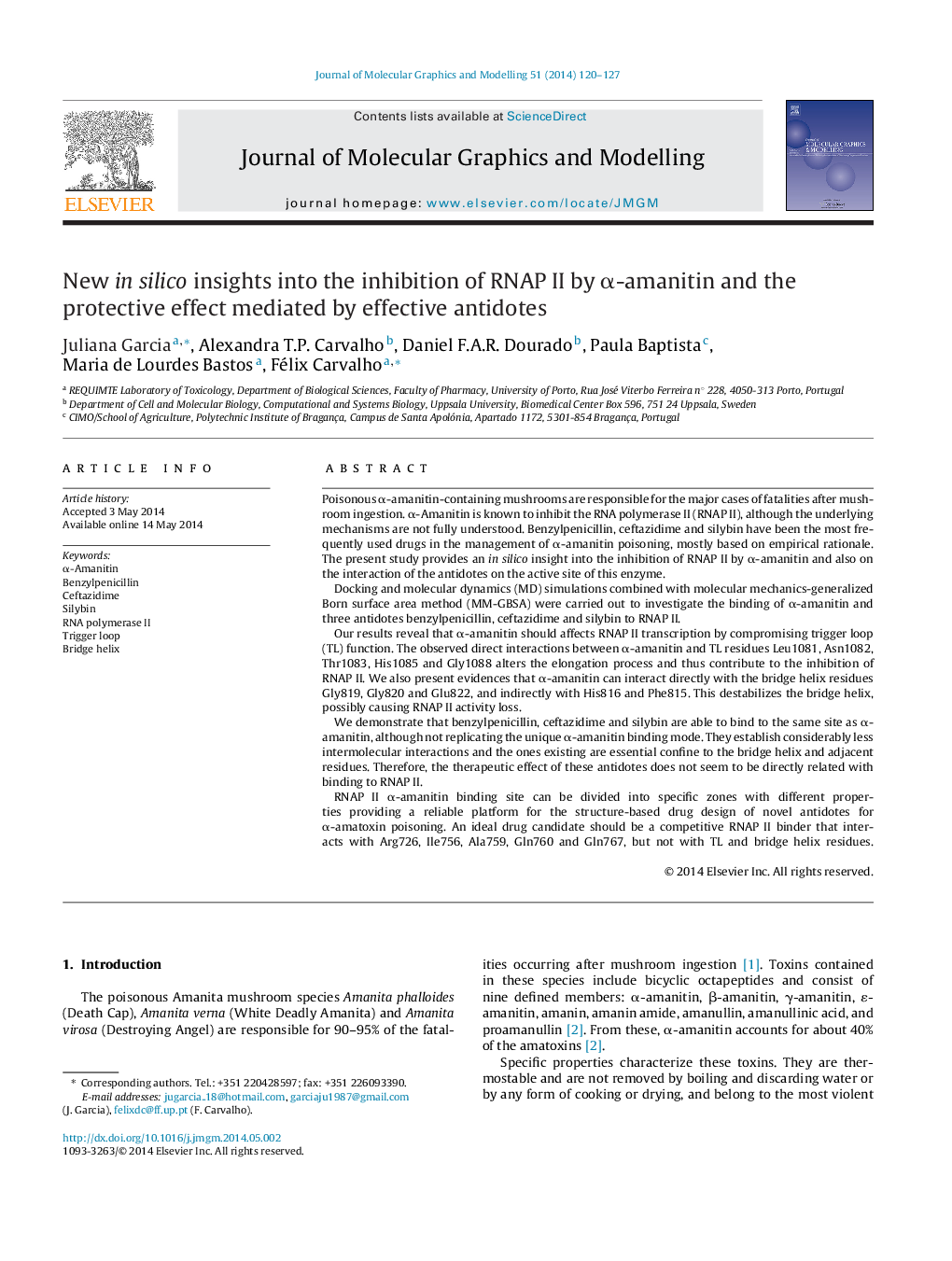| کد مقاله | کد نشریه | سال انتشار | مقاله انگلیسی | نسخه تمام متن |
|---|---|---|---|---|
| 444255 | 692951 | 2014 | 8 صفحه PDF | دانلود رایگان |

• α-Amanitin inhibits RNA polymerase II through unknown mechanisms.
• The interaction of α-amanitin with RNA polymerase II activity is shown in silico.
• The mechanism relies on binding of α-amanitin to TL and bridge helix residues.
• Interaction of different antidotes with this enzyme is shown in silico.
Poisonous α-amanitin-containing mushrooms are responsible for the major cases of fatalities after mushroom ingestion. α-Amanitin is known to inhibit the RNA polymerase II (RNAP II), although the underlying mechanisms are not fully understood. Benzylpenicillin, ceftazidime and silybin have been the most frequently used drugs in the management of α-amanitin poisoning, mostly based on empirical rationale. The present study provides an in silico insight into the inhibition of RNAP II by α-amanitin and also on the interaction of the antidotes on the active site of this enzyme.Docking and molecular dynamics (MD) simulations combined with molecular mechanics-generalized Born surface area method (MM-GBSA) were carried out to investigate the binding of α-amanitin and three antidotes benzylpenicillin, ceftazidime and silybin to RNAP II.Our results reveal that α-amanitin should affects RNAP II transcription by compromising trigger loop (TL) function. The observed direct interactions between α-amanitin and TL residues Leu1081, Asn1082, Thr1083, His1085 and Gly1088 alters the elongation process and thus contribute to the inhibition of RNAP II. We also present evidences that α-amanitin can interact directly with the bridge helix residues Gly819, Gly820 and Glu822, and indirectly with His816 and Phe815. This destabilizes the bridge helix, possibly causing RNAP II activity loss.We demonstrate that benzylpenicillin, ceftazidime and silybin are able to bind to the same site as α-amanitin, although not replicating the unique α-amanitin binding mode. They establish considerably less intermolecular interactions and the ones existing are essential confine to the bridge helix and adjacent residues. Therefore, the therapeutic effect of these antidotes does not seem to be directly related with binding to RNAP II.RNAP II α-amanitin binding site can be divided into specific zones with different properties providing a reliable platform for the structure-based drug design of novel antidotes for α-amatoxin poisoning. An ideal drug candidate should be a competitive RNAP II binder that interacts with Arg726, Ile756, Ala759, Gln760 and Gln767, but not with TL and bridge helix residues.
Figure optionsDownload high-quality image (240 K)Download as PowerPoint slide
Journal: Journal of Molecular Graphics and Modelling - Volume 51, June 2014, Pages 120–127